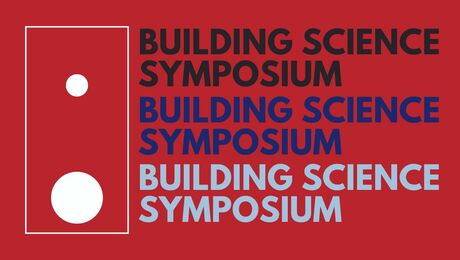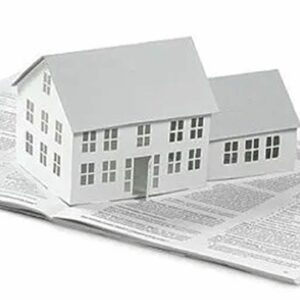Tight house – furnace/fireplace air
I live an a recently built (1999) house. When the furnace fires up, there’s a strong “chimney” smell. I think the draw from the furnace is pulling air either down the chimney or through the air vent in the back of the firebox. I can’t make out how the firebox and furnace wre supposed to be plumbed, but I’ve always been suspicious that something isn’t quite right. The firebox has a vent and an ash dump. In the winter time with a fire going, air from the room is strongly drawn down into these (the reverse of what you would want). There are two metal doors at the base of the chimney next to the furnace which also draw air in winter. I’m assuming at least one is supposed to be an ash cleanout, not sure if they’re also supposed to provide air to the furnace, but they couldn’t, since the air wants to go the wrong way. There’s a small vent on the outside of the chimney that I’m assuming is supposed to supply fresh air to something (firebox, furnace, both?)
Questions:
How should make-up air be delivered to the furnace (in an open basement right now)?
How should the air vent in the firebox be plumbed?
Pete


















Replies
What type (efficiency) of furance do you have.
So of the higher efficient furnaces are suppost to have an external air supply piped to them. Some other it is optional.
Bryant oil-fired hot water unit with tankless coil. This was a spec house, so I'm sure efficiency is nothing great. I can provide more details if they'd help. There's some sort of a weighted damper on the flue. I know zip about furnaces, which is why I'm asking.
Pete
Edited 6/18/2004 12:43 pm ET by BRADLEPC
I really don't know anything about oil fired and just a tiny amount about gas.
>>There's some sort of a weighted damper on the flue.
That's called a barometric damper and is supposed to regulate the draft going up the flue from the oil fired boiler.
If the draft gets too high, the barometric damper will open and allow air to mix with the flue gases, cooling them down and slowing them down. (You don't want flue gases moving too fast through the system.)
You need to get a good HVAC person to check out your system/house. Ask them if they actually use a draft gauge. If not, call someone else.
Wood fires can produce huge amounts of carbon monoxide - so do not use the fireplace until the situation is fixed.
"It is as hard for the good to suspect evil, as it is for the bad to suspect good."
-- Marcus Tullius Cicero, statesman, orator, writer (106-43 BCE)
The fireplace seems to draw ok once it gets going. It just seems to me there needs to be something feeding are in when the furnace and/or the fireplace are drawing it out.
Pete
On a 1999 house there should already be some sort of makeup air provision for the furnace. This has been code for 20-30 years in reasonably non-backward parts of the country. I think the code for fireplace makeup air is a bit spottier, though.
When the fireplace is burning it should draw some amount of air from the room, to keep smoke odors under control. However, ideally the bulk of combustion air should be supplied by an outside connection, separate from the furnace makeup air connection.
I agree it should have a provision for makeup air. I'm guessing the base of the chimney is one big plenum with a vent to the outside, and I'm supposed to prop one of the doors open inside for air? Seems kinda cheesy even if it worked.
I guess my real question should be: is there a better way? Maybe something that will only feed air when the furnace wants it? I'm aware of HRVs but this seems like overkill.
Pete
I think you should probably get someone knowledgeable in there to look at the setup and figure it out. It's not at all uncommon for contractors to screw up the ventillation, and it's something that inspectors may not spend a lot of time on (depending on the time of the day and the color of the money).
I agree with Dan H--get someone knowledgable to look at it. I'm surprised you haven't experienced symptoms of carbon monoxide poisoning--headache and so on. It sounds dangerous to me. Do strange things happen when you open a door when the furnace is running? Anyway, someone who knows furnaces should check it out.
>>I'm surprised you haven't experienced symptoms of carbon monoxide poisoning--headache and so on.
While headaches are one possible symptom, be aware that (i) CO poisoning can have many different symptons, and (ii) it is a potentially deadly poison and non-lethal does can have very significant and long lasting adverse health effects.
"It is as hard for the good to suspect evil, as it is for the bad to suspect good."
-- Marcus Tullius Cicero, statesman, orator, writer (106-43 BCE)
There's a (basic) CO detector mounted very near the furnace. I don't think the house is so tight that the furnace isn't getting air. I do think there must be a more efficient method than snorking air through every crack and crevice in the house. Nothing in the manual suggests that this furnace has a discrete air intake that can be connected to the outside. Still, I'd think that some sort of arrangement with a damper that opened in response to the draw from the furnace might do the trick. Does such a thing exist, or is it normal practice to depend on leaks in the house envelope? If I were to finish the basement and partition off the furnace, what would I do?
Pete
On a furnace such as yours, with a draft damper, there should be an air inlet of some sort, several inches in diameter, within a few feet of the furnace. The inlet could be built into the chimney somehow, I suppose, but is more often a separate piece of ductwork, running up to an open attic, or in from a screened outside vent.
(And if you finish the basement, you have to be careful to not separate the air inlet from the furnace.)
http://www.skuttle.com/216.html
"It is as hard for the good to suspect evil, as it is for the bad to suspect good."
-- Marcus Tullius Cicero, statesman, orator, writer (106-43 BCE)
This looks like a "controlled leak" for the return side of a forced air system. I've got baseboard hot water and I'm trying to feed air to the furnace.
Pete
That is the way it is typically hooked up, but what it does it equalize pressures and allow air into the system when there is a negative pressure zone.
I believe it should do the same when there boiler is sucking air becasue of competeing uses.
But I stll think you need a good HVAC person to check your system out; there are two many variables to diagnose on the internet
"It is as hard for the good to suspect evil, as it is for the bad to suspect good."
-- Marcus Tullius Cicero, statesman, orator, writer (106-43 BCE)
Finally got back to looking at this. Turns out that the air vent on the outside of the chimney was non-functional because a big gob of mortar had dropped into the space behind the vent during construction, almost completely blocking it. It knocked out pretty easily with a chisel. That should certainly make the fireplace and furnace (both fed from the same vent) happier.
Fundamentally the house is "too tight" so things like the dryer, the furnace, and the firepace all wind up battling it out for the same air when the windows are closed. In the long run, better ventilation is the final answer. Add it to the project list...
Pete
When I was a kid we moved into a new house with a gas furnace in the basement. The furnace never seemed to work right, and then, on the first really cold day I almost didn't wake up (having the BR closest to the furnace). Turned out that a piece of loose tile had fallen into the flue during construction and about 80% blocked it.
It's always good to double-check these things.